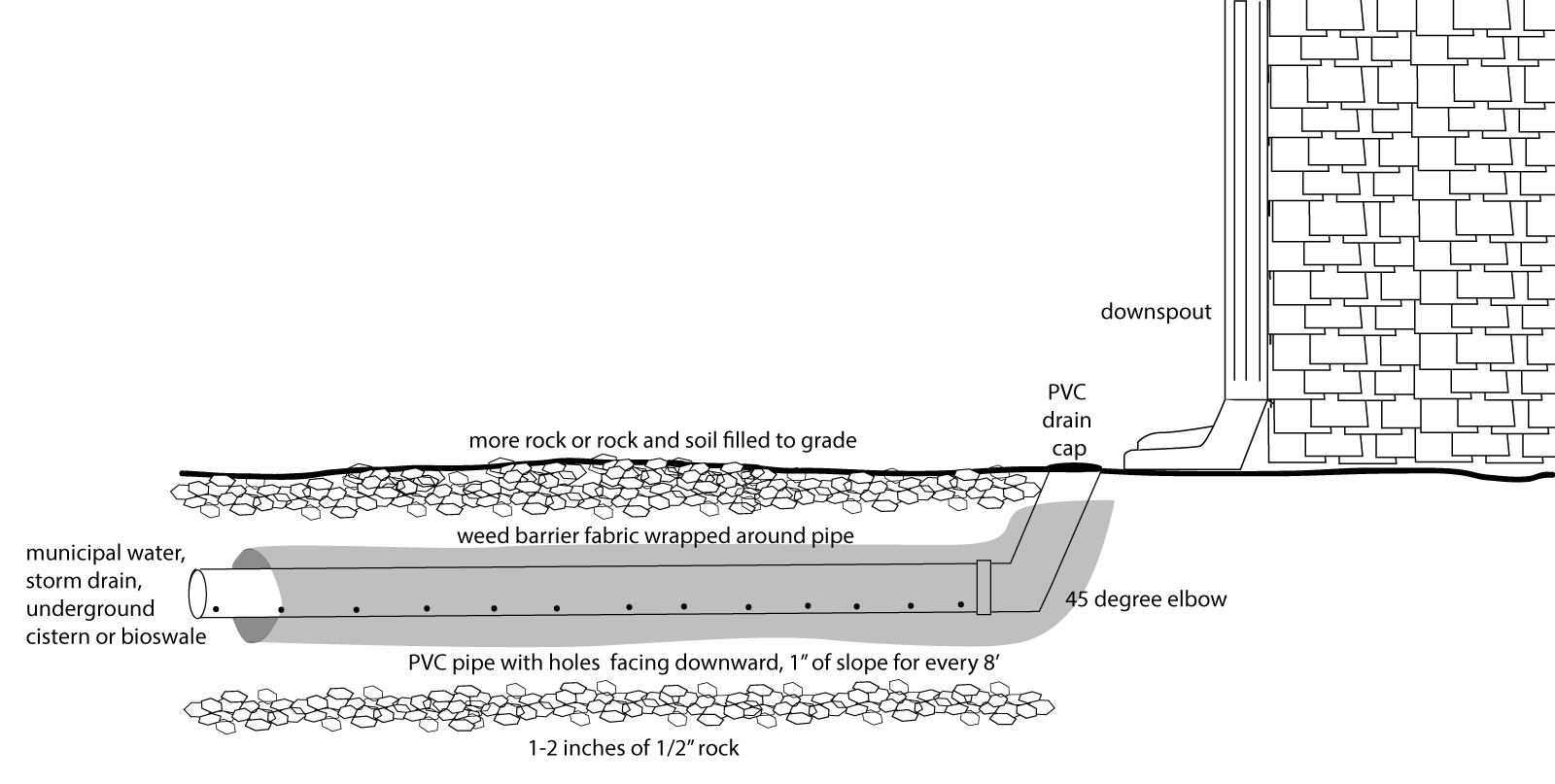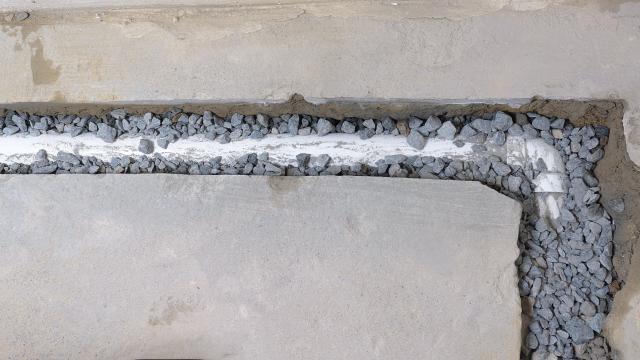If you’re looking to harness the power of water at your will, French drains are the way. Whether you have water pooling in areas outside when it rains, areas of your garden that get too much water, or a garage or house that floods, a little rock and pipe can make those problems disappear before they become costly repairs.
Any water in your house is obviously too much water. While small amounts can be mitigated in, say, a basement by a dehumidifier, if you see any signs of water incursion on your ground floor, you want to ensure it’s dealt with quickly. On a patio, you’re looking for areas where water pools during a rainstorm. On a pavered patio, those areas often become depressed, which only exacerbates the problem.
Gardens are probably the easiest to mitigate and the easiest place to miss that there’s too much water. Where your downspouts empty is an obvious area for too much water, but you can choose plants specifically for bioswales meant to benefit from the water. If you find your plants are routinely experiencing edema (a result of too much water) or root rot, you’ve got to mitigate the situation.
What are French drains?
Think of French drains as the second half of a water management system that begins on the roof with your gutters, which carry rain off the roof and then utilise downspouts to move the water away from the house. Those downspouts can empty into your yard or sometimes connect with a series of pipes to take the water directly to underground storage or the city sewer. French drains are a version of that, underground.
Simply put, a French drain disperses water quickly using pipe and rock. A trench is created where the water pools, and it should go out to where you want the water distributed. That trench is filled with a drain pipe with many holes along it, so water can enter and quickly travel as it leaves, and then backfilled with rocks. When water encounters ground, it’ll naturally flow to the place with the least resistance, and the rocky trench will present less resistance than soil, grass, plants, or the brick, wood, or other material of your home.
Once the water is flowing into that rocky trench, it comes into the pipe through the holes, and is quickly distributed the length of the trench and pipe.
French drains make sense around a house, alongside a garage, under a patio, or coming off your downspouts. They also allow you to turn water from a nuisance to a friend: You can literally redistribute rainwater in your yard in small or large ways. A French drain really works much like a stream does — water finds its way into it, collects, and then moves quickly where there is least resistance.
How to make a French Drain

Start by figuring out where the water is pooling and where it’s coming from. We identified a few sources at the beginning of the article. Next, figure out where the water should go, remembering it doesn’t need to be a straight line, but it does need to go downhill, even if only slightly (one inch for every eight feet of ditch). This is what directs the water. Without that slope, water just pools at the lowest point without anyplace to go, which can make your problems worse.
A French drain can be any length, but the longer it is, the more effective it is. Once you’ve mapped out the path, you can begin to dig a trench. The depth and width of the trench will depend on how much water you’re redirecting, I recently watched an episode of Homestead Rescue where they redirected a raging river away from a house using what was essentially just a river-sized French drain.
For most of us, your trench will be 18-24 inches deep, and at least twelve inches wide. Since digging trenches sucks, you should consider renting a trencher from a local hardware store.
Now you’ll need a lot of rock, at least ½-inch in diameter, and you’ll want to rinse it off before you lay it into the trench. You’ll use the rock to cushion the pipe, so it will completely surround it. This helps filter the water. Between the rocks and the pipe, weed fabric will ensure plant roots don’t grow into your pipe, destroying your drain. Start by laying an inch or two of gravel in the trench over the entire length. Over that gravel, lay your weed cloth.
The exciting part starts now. If your trench is mostly a straight line, you’ll use rigid PVC for this purpose, and it comes with holes already drilled into it; but if you’re going hardcore DIY, you can drill holes into PVC pipe, too. If your trench is curvy, you’ll choose drain pipe, which is corrugated to bend. It has slits that act like the holes do.
If given the choice, you’d likely want to choose PVC, the benefit being that it’s so stable, you can clear clogs with equipment that might harm the flimsier drain pipe. In fact, you can even expose the pipe to the surface by attaching a corner joint to the end of the PVC so the end is perpendicular to the ground. When you want to clean it out, just pop open the top on the pipe.
In either case, you’ll lay it over the weed cloth, with the holes facing downward toward the ground. Wrap the weed fabric around your pipe, and then cover with the rest of the rocks, to the level of the dirt. If the look of the rock bothers you, you can infill with the rocks to a few inches below grade and then backfill with soil. You won’t see the trench, but you have to remember it’s there.

Leave a Reply
You must be logged in to post a comment.